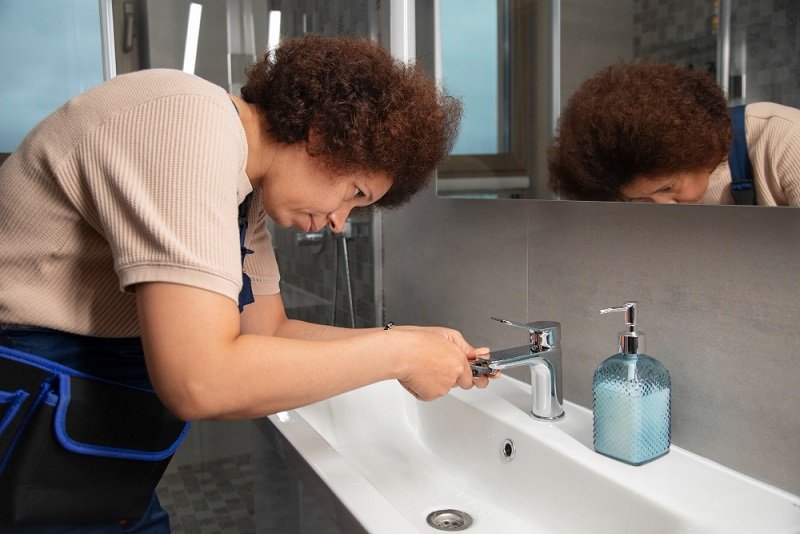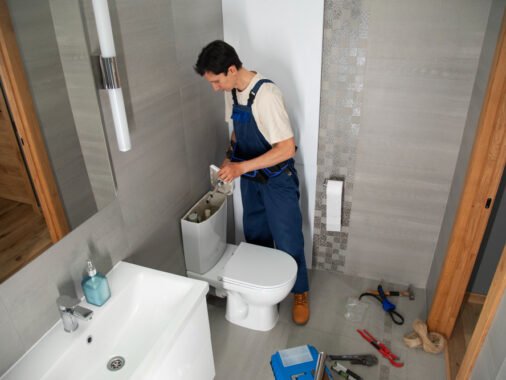Dealing with a clogged sink can disrupt daily routines and cause inconvenience. Learning how to effectively unclog a sink can save time and money, while ensuring smooth drainage in your kitchen or bathroom. This comprehensive guide provides detailed steps and tips on how to unclog different types of sinks, along with preventive measures to avoid future clogs.
Understanding Sink Clogs
Common Causes of Sink Clogs
Sinks can become clogged due to various reasons, including:
- Food Residue: Kitchen sinks often clog due to food scraps, grease, or oil buildup.
- Hair and Soap Scum: Bathroom sinks can clog from hair, soap residue, and toothpaste.
- Foreign Objects: Accidental flushing of items or debris that shouldn’t go down the drain.
Tools You May Need
Before starting, gather these tools:
- Plunger: A standard sink plunger can help dislodge most clogs.
- Plumber’s Snake (Auger): Used for more stubborn clogs deeper within the drain.
- Pipe Wrench: To disconnect and clean sink traps if necessary.
- Bucket: For catching water or debris during maintenance.
- Rubber Gloves: Protect hands from water and debris.
Steps to Unclog a Sink
Step 1: Assess the Situation
- Identify the Type of Sink: Determine if you’re dealing with a kitchen sink or bathroom sink, as the methods may vary slightly.
Step 2: Prepare the Area
- Clear the Area: Remove any items from under the sink and create a clear workspace.
- Protect Surroundings: Lay down old towels or rags around the sink to catch spills.
Step 3: Use a Plunger
- Plunge the Drain: Position the plunger over the drain opening and plunge vigorously up and down.
- Create a Seal: Ensure the plunger creates a tight seal around the drain to maximize effectiveness.
- Repeat as Needed: Continue plunging until the clog is dislodged and water begins to drain.
Step 4: Try a Plumber’s Snake (Auger)
- Insert the Snake: Feed the auger cable into the drain while cranking the handle.
- Rotate and Push: Rotate the auger handle and gently push forward until you encounter resistance.
- Retrieve Obstruction: If successful, pull back the auger to retrieve or break apart the clog.
Step 5: Test and Clean Up
- Run Water: Turn on the faucet and run hot water to flush out any remaining debris.
- Check Drainage: Ensure water drains smoothly without backing up.
- Reassemble: If you disassembled any parts, such as the trap, reassemble them securely.
Preventing Future Clogs
Tips to Avoid Sink Clogs
- Use Sink Strainers: Install sink strainers to catch food particles, hair, and other debris before they enter the drain.
- Dispose of Grease Properly: Avoid pouring grease or oil down the drain; instead, dispose of it in the trash after it solidifies.
- Regular Maintenance: Periodically clean sink stoppers, traps, and overflow openings to prevent buildup.
FAQs
If plunging doesn’t clear the clog, try using a plumber’s snake (auger) to reach deeper into the drain and break apart the obstruction.
Chemical drain cleaners can be effective but may damage pipes and are harmful if not used correctly. Consider natural alternatives or mechanical methods first.
To clean the sink trap, place a bucket underneath to catch water and debris, use a pipe wrench to loosen the trap fittings, and clean out any buildup or obstructions.
A foul odor from the sink may indicate organic matter trapped in the drain or buildup of food particles. Regular cleaning and maintenance can help prevent odors.
Slow drainage may indicate a partial clog. Try plunging or using a drain snake to clear the obstruction before it worsens.
If DIY methods fail to clear the sink, or if there are recurring clogs, it may be best to call a professional plumber to assess and resolve the issue.
Install a sink strainer or hair catcher to trap hair before it enters the drain. Regularly clean the strainer to maintain effectiveness.
Boiling water can help dissolve grease and loosen minor clogs, but avoid using it on porcelain sinks as it can cause cracks. Use hot water instead.
Conclusion
Knowing how to unclog a sink effectively empowers homeowners to handle common plumbing issues independently. By following these step-by-step instructions and adopting preventive measures, you can maintain clear, efficient drainage in your kitchen and bathroom sinks. Remember to exercise caution when using tools and chemicals, and consider seeking professional assistance for persistent or complex clogs to ensure long-term plumbing health in your home.




